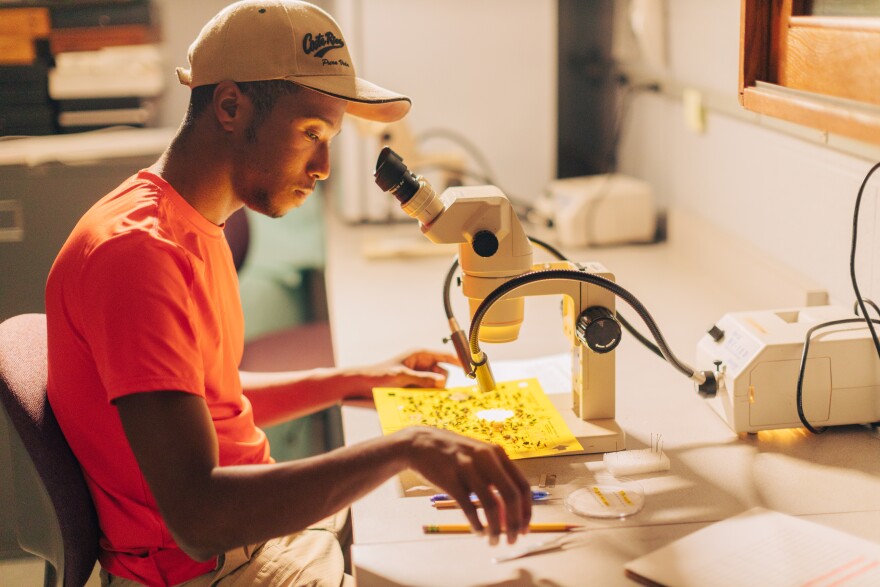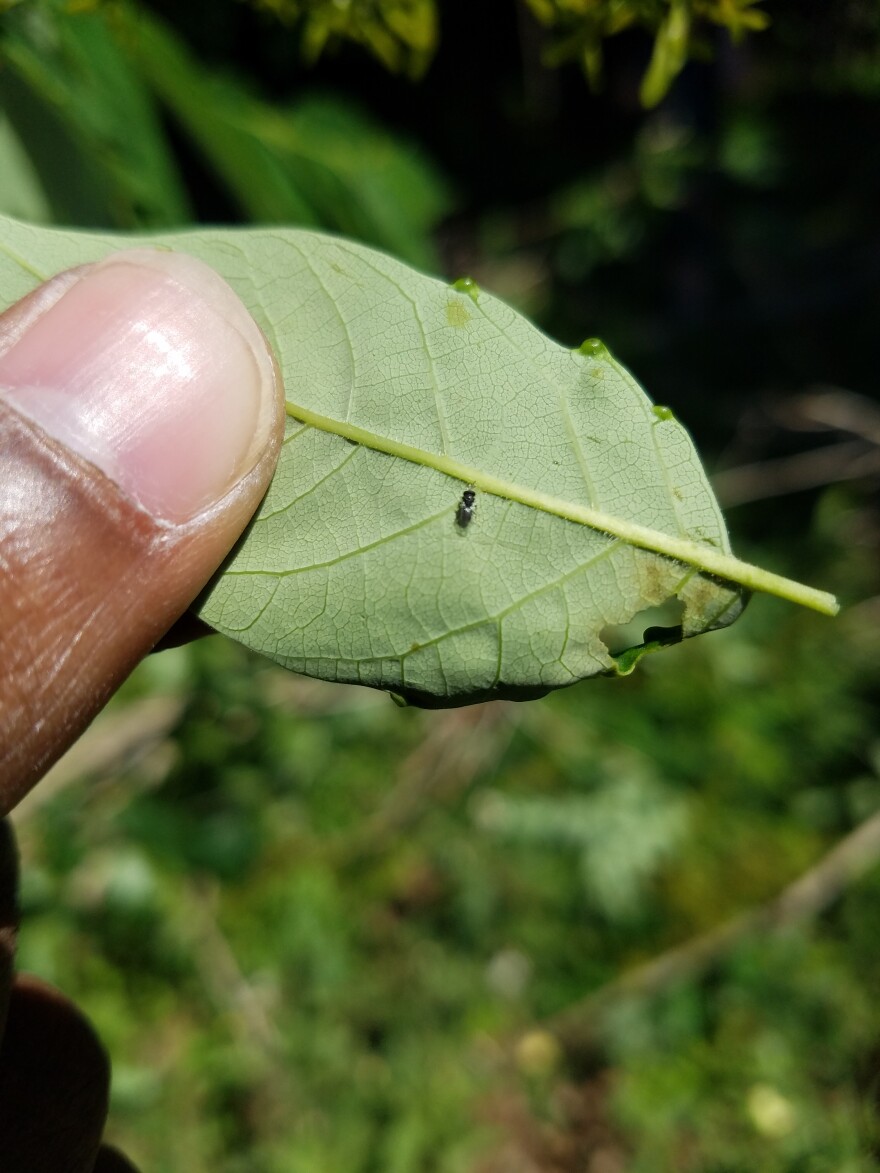Every other Friday, the Outside/In podcast team answers one listener question about the natural world.
This week’s question comes from Maisie, in Newport, Vermont.
“A friend of mine recently had a bowl of ramen. And a lot of wasps swarmed into it and then died. And some of them kinda flopped around, and made it out of the bowl of soup and they still died. She was wondering: what poisoned the wasps?
The ingredients were: olive oil, tofu, shiitake mushrooms, vegetable stock, dried kombu, soy milk, sesame paste, soy sauce, sesame oil, chili oil, rice vinegar, sugar… corn, scallions, and sesame seeds.”
[Editor's Note: This segment originally aired in September, 2021]
First of all, this ramen is no instant soup we’re talking about here: this was a homemade, vegetarian recipe.
To help answer this question, we called Jared Dyer, a graduate student at Virginia Tech studying entomology with a deep respect for wasps.

“I wasn’t always into wasps… it really started in graduate school,” said Jared. “Just the vast diversity…the many services and roles they play in ecosystems, and how beneficial they can actually be.”
Jared studies a very tiny wasp called Trissolcus japonicus, a parasitoid species which lays its eggs in stinkbug eggs, ultimately helping to control the stinkbug population.
So, all this to say, Jared is not approaching this from the perspective that wasps are the villain in this story. In fact, he pointed out that when they swarmed the ramen, they were probably just looking for something to eat. After all, the ramen contained protein, which adult wasps feed to their larvae, and sugar.
“Most adult wasps…feed on nectar or anything rich in sugar or carbohydrates,” said Jared. “Like juices or fruits or even honeydew from aphids, soda cans.”
But, back to our question: what killed the wasps?
Hypothesis #1: Drowning
While wasps don’t have lungs but they do breathe, through a network of openings and tubes – or, spiracles and trachea – which run all over their body.
But Maisie’s friend observed that the wasps did manage to stagger out of the bowl before they died, which might suggest another explanation.

Hypothesis #2: Death by Spice
There was one ingredient that really stood out to me: the chili oil.
Chili oil contains capsaicin, the chemical component of the pepper that gives it its spice. It’s classified by the US EPA as a biochemical pesticide, which, among other things, is used to control insects.
So, the level of spiciness of the soup is perhaps a critical part of the answer to Maisie’s question.
Hypothesis #3: Too much salt
When I asked Jared for his guesses, he pointed to an entirely different, somewhat unexpected component of the ramen.
“I don't know if poison’s the right word. It may have been just too much of one ingredient. Perhaps the sodium content might've affected it,” Jared said.
Among the list of ingredients, Maisie mentioned soy sauce and dried kombu, a seaweed.
“My first guess would be the sodium,” said Debbie Maciecki. She works with the YellowJacket Experts, an all-natural wasp removal company in Connecticut.
“Insects that would ingest it would probably not fare very well with that,” she said, although she added that her guess was more based on the levels of sodium she associates with ramen and less to do with wasps’ particular sensitivity to the salt.

Hypothesis #4: All of the above
Without a wasp autopsy, there’s no way to know for sure what killed the wasps: sodium, chili oil, or even, possibly, the vinegar. But perhaps it might have been stress from all these elements, combined with the hostile environment of the soup itself.
After all, if a human fell in a giant bowl of ramen, they might not fare too well either.
If you’ve got a question about the natural world, can call our hotline, 1-844-GO-OTTER, or send a voice memo by email, outsidein@nhpr.org.
Don't forget: Outside/In is a podcast, too! Check us out here or wherever you listen to podcasts.



